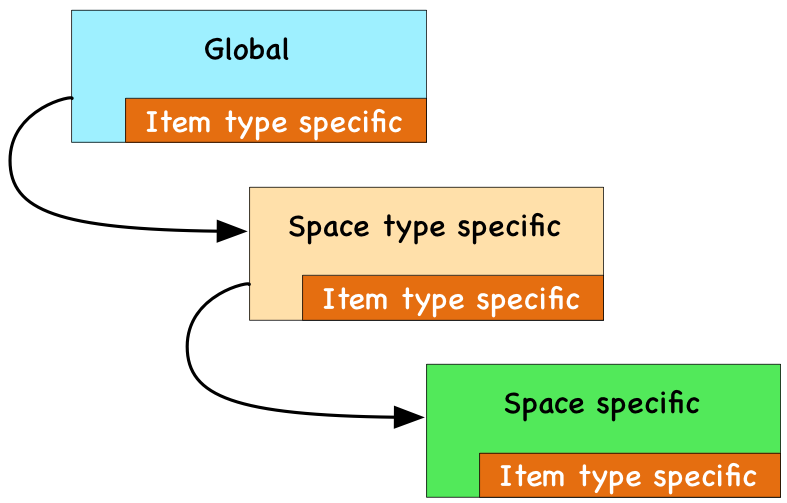Basics#
If you are dealing with many projects or workspaces and different types of projects such as electronics development, software development, mechanical engineering or controlling, configuration can become complex. To handle large, diverse configuration scenarios, Allegra offers workspace types and configuration inheritance. This allows you to realize diverse and flexible configuration scenarios with little effort.
Configuration Inheritance#
To ensure maximum flexibility and at the same time minimize the workload for simple use cases, Allegra uses a hierarchical inheritance system for the configuration of important elements.
Configurations can be defined for these elements at four different levels:
global
item-specific
workspace type-specific and item-specific
workspace-specific and item-specific
A configuration at a lower level overrides the one at a higher level. Especially in larger installations, this increases consistency and minimizes the time required for creating and maintaining configurations.

The following elements can be configured according to this scheme:
Item attributes
Input forms
Workflows
At the global level, the configuration entities can be configured either for all item types or specifically for some item types. The same applies to the workspace type level and the workspace level.
You can overwrite any higher-level configuration at a lower level. For example, if you have changed a custom property at the workspace type level for the item type “Task”, you can configure this property differently for a specific project and the item type “Task”.
The higher in the hierarchy you configure the elements, the simpler and less effortful the configuration becomes.
Workspace Types#
Workspace types centrally define many properties of the workspaces assigned to them. Workspaces or projects inherit their configuration like workflows, forms and properties from their workspace type. This way, you can change the configuration of all workspaces of a workspace type at one place. This is significantly more powerful and flexible than transferring configuration properties once when creating a workspace.
The following configuration elements can be set at the level of the workspace type:
Type of workspace, e.g. Scrum, Helpdesk
Phase support e.g. for releases and sprints
The item types available in this workspace
Workflows associated with items in this workspace
Custom properties for items in this workspace
Custom forms for items in a workspace of this type
Available item states
Available priorities for items in this space
Available severities (impacts) for items in this space
